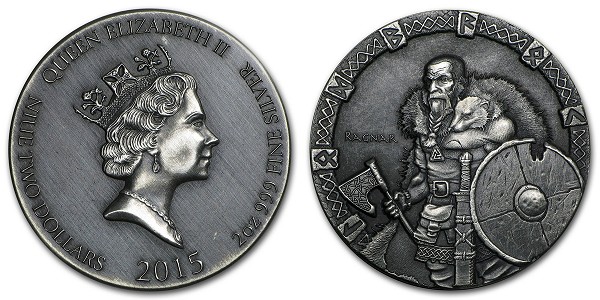Borromean rings
 Standard Borromean diagram |
One of well known impossible figures is Borromean rings. The Borromean symbol is based on symmetrical arrangement of three intersecting circles. Assuming that all rings are flat they cannot constitute this symbol without distortions or breaks.
In mathematics, the Borromean rings consist of three topological circles which are linked and form a Brunnian link, i.e., removing any ring results in two unlinked rings.
The name of Borromean rings comes from their use in the coat of arms of the aristocratic Borromeo family in Italy. Near Arona in northern Italy, the Borromeo family own three islands in Lake Maggiore: Isola Bella, Isola Madre, and Isola Superiore. Isola Bella contains an impressive Baroque palazzo built in the seventeenth century by Vitaliano Borromeo (1620-1690). There are many examples of the famous emblem in the house and the garden.
 Isola Bella |
However, the pattern of circle interlacing is not consistent and several different link types can be found in the palazzo.
 Variants of interlacings |
Below you can see photos of variants of the symbol from the palazzo.
 Entrance ticket pattern (a) |
 Flower pot pattern (a) |
 Flower pot pattern (c) |
 Gate pattern (c) |
Borromean link was known long before Vitaliano Borromeo by vikings of Scandinavia. The symbol known as 'Odin's triangle' or the 'Walknot' (meaning knot of the slain) has two variants. One is a set of Borromean triangles, the other is a unicursal curve that forms a trefoil knot. The two designs are clearly closely related.
 Walknot |
Below is one of examples of Walknot. This is a partial image of one of the picture stones from Gotland, an island in the Baltic sea off the southeast coast of Sweden. It is now in the Museum of National Antiquities in Stockholm. It was erected in about the ninth century and has a walknot near the top of the stone.

 Larbro picture stone |
Borromean rings have been used in various contexts to indicate strength in unity. They have also been used in religios designs to simbolize Trinity.
 The Borromean rings as a symbol of the Christian Trinity, from a 13th-century manuscript. |
Similar to the Borromean rings some other objects have been arranged in the same manner. For example, snakes, moons and sickels have been used in various heraldic symbols. The motif with moons was designed by the architect Philibert de l'Orme, and is based on the moon emblem used by Diane de Poitiers (1499-1566), mistress of King Henry II of France.
 Barromean moons of Diane de Poitiers |
 Snakes from in Bangor Cathedral, north-west Wales |
 Sickles from castle at Farleigh Hungerford in south-west England |
Japanese graphic design is famous for its variety, inventiveness and elegance. These qualities are clearly visible in the design of 'mon' or family crests. In the examples here, you will find storks, bamboo, polygons, and tomoe (the comma-like shapes on the right-centre).


 


|
Today Borromean rings can be met many logotypes. The most known is logo of Ballantine beer. In North America, the Borromean rings is known as the Ballantine rings after the New Jersey Brewing company P. Ballantine and Sons.
|
|
Krupp The Prussian Alfred Krupp (1812-1887) inherited a small iron works from his father, and transformed it into a large empire of heavy industry. In 1875 he registered three overlapping circles, as the trademark of his firm: they represented seamless railway tyres, one of the company's masterworks in the 1850's. As the production of weapons increased, the same symbol came to be interpreted, especially in this century, as the muzzles of three cannon. The symbol is still used by the new corporation Thyssen-Krupp. |

|
|
Consorzio Pisa Ricerche The logo of the Pisa Research Consortium combines the Borromean rings with a Möbius band. The group works to promote partnerships between universities and industry. As with many other uses of the rings, their logo was designed specifically to symbolise the importance of cooperation between three bodies. |

|
|
Arts Festival This logo was used for a Festival of African American Literature and the Arts at Clemson University. |

|
|
University of British Columbia UBC has a policy to work towards a sustainable community through the fair, wise and efficient use of resources within the bounds of a finite planet. The Sustainability Office assists the university in teaching, promoting and implementing a balance between Ecological, Economic and Societal goals. |

|
Chemists created special polymer networks with where hexagonal structures can be entangled in the Borromean manner. Also, DNA molecules DNA molecules with prescribed geometric or topological structures can be created. But the smallest Borromean structure was created from three interlocked molecular rings.
 Borromean molecule |
Unless the Borromean rings is impossible figure in it's common form. It can be even more impossible if replace rings with impossible triangles.
 © Lee Sallows |
The artice was created by materals of site devoted to Borromean rings http://www.liv.ac.uk/~spmr02/rings/index.html
The symbol of Walknot appears on coins of such waterlocked states as Tokelau and Niue, which far from Scandinavian Peninsula.
 10 dollars of Tokelau |
 2 dollars of Nuie |



